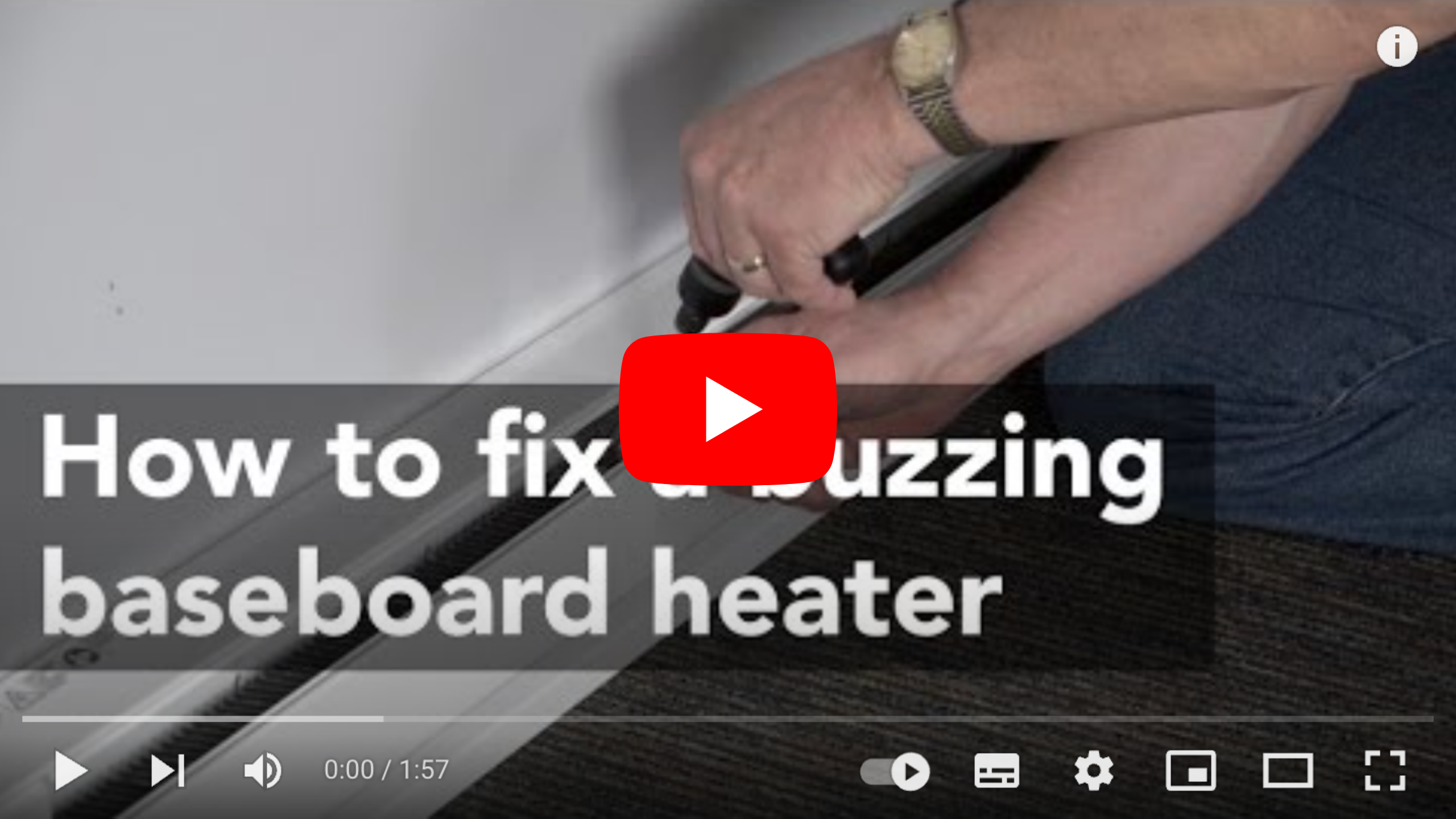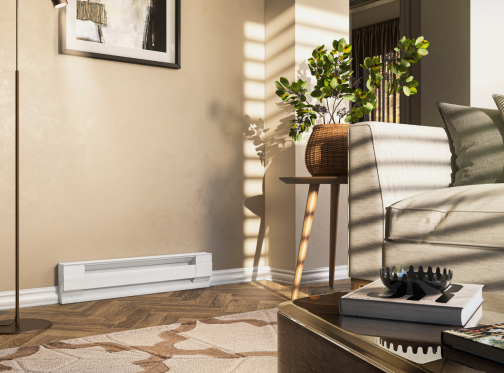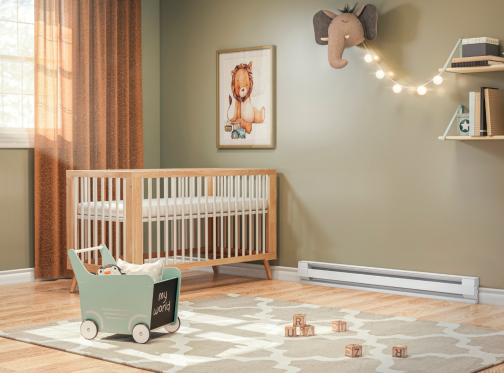
Fix A Buzzing Baseboard Heater Sound In 5 Easy Steps

Sometimes baseboard heaters can give off a slight humming or popping noise. It's usually nothing to be alarmed about, but a buzzing baseboard heater can be annoying to some people. Luckily, there's an easy fix to eliminate the sound or at least make it less noticeable. The noise is essentially caused by the heating element being installed on a wall that is warped or slightly uneven. To fix it, just readjust a few screws so the unit fits snugly against the wall without pinching the element.
If you're having any performance issues with your heater, it's always good to start troubleshooting by checking your voltage. If you hook up a 120-volt baseboard to a 240-volt supply, it can cause a variety of issues, a humming noise being one of them. For information on choosing the right baseboard heater for your space, check out our blog on how to choose the right voltage heater.
If you do have the wrong voltage heater, turn the breaker off. You'll need to replace the heater right away.

Follow These 5 Steps if Your Heater Is Having Performance Issues:
Step 1:
Before you begin, be sure to shut off the breaker attached to your heater.
The first thing to do is turn your heater on and let it run. After 15 minutes, go to your circuit panel and shut off the breaker attached to the heater so you can safely work.
Step 2:
You can loosen the mounting screw with a drill or screwdriver.
Next loosen -- but don't remove -- the screws attaching the baseboard to the wall. There should be at least two screws, if not more for longer units. Be careful because the heating element will probably still be hot to the touch.
Step 3:
The next step is to loosen the grounding screws that secure the heating element to the casing.
The next step is to loosen the grounding screw, which can be found near the middle of your heater. You can find it by looking down into the vent on top front of the unit. Again, it doesn't need to be removed, just loosened.
Step 4:
Bump the heater with your palm to get the element in a resting position.
Step 5:
Bump the cabinet a bit with your palm to allow the element to come to a natural resting position. Now all you have to do is tighten everything back down. Start with tightening the mounting screws, then tighten the screw on the elements.
It might sound silly for us to tell you to loosen and tighten a few screws to solve this problem, but here is what is going on: the baseboard heater is built in the factory with the element square with the back of the cabinet. If the cabinet back is slightly warped when it's installed on the wall, it pinches the element, which more often than not is what causes the humming noise. By loosening the screws and retightening them, the element and cabinet are all secured in relation to how the heater is installed on the wall. When you flip the breaker back on and power on the heater, it should be much more quiet than it was before. Bye bye buzzing baseboard heater!

Check out one of our most popular bedroom electric baseboard heaters. This heater is whisper-quiet, easy to install and maintains consistent heat where you need it the most!
Video Transcription
0:03 Dave: Hi, I'm Dave with Cadet Heat.
0:05 Joining me is Steve with Cadet Heat Tech Department.
0:08 Now Steve, this is on and it feels great, but I hear just like a slight buzz and occasionally a pop
0:15 What's going on?
0:16 Steve: Ok, well with a new heater getting it installed, mounting it to your wall.
0:21 You have a bit of a bow occasionally, or a little but of an uneven space and with the heat and contraction
0:28 That causes the element sometimes to make a ping sound or high pitched sound.
0:33 Dave: Before we get to work here, because this is hot, what do we do?
0:37 Steve: Since the heater has been on for a little while, we can go ahead and turn off
0:40 the breaker for now.
0:41 And do these adjustments.
0:42 Dave: So what do we do?
0:43 Guide me through it.
0:44 Steve: So what we're going to do, is we anchored this heater with two screws.
0:48 So we'll go ahead and loosen those.
0:52 Once it's loose we have the two end plate screws, and we can go ahead and loosen this ground one
0:57 Now that the element is loose, these are loose, we can kind of tap it a little bit.
1:03 And let it line itself, and then basically we are just going to reverse that process.
1:08 Dave: Ok great!
1:09 This is my favorite part, watching someone else work.
1:12 Steve: laughs.
1:13 Dave: You know what makes a lot of sense because there's no such thing as a straight wall in any house.
1:18 So what you are doing is kind of giving this heater an opportunity to better fit this exact wall
1:24 Steve: Right, and what you're doing is just allowing the element to free itself and just allows it to conform.
1:30 Dave: Alright well we turned the breaker back on (that's important if you actually want heat), and we're feeling the warmth, but not hearing the buzz.
1:38 Steve: Great.
1:39 Dave: Good job Steve.
1:40 Steve: Well thank you. Well Done.
1:41 Dave: I'm Dave with Cadet Heat.
1:42 Steve: And I'm Steve with the Tech Department, and we appreciate you watching today.
1:46 Thanks!


